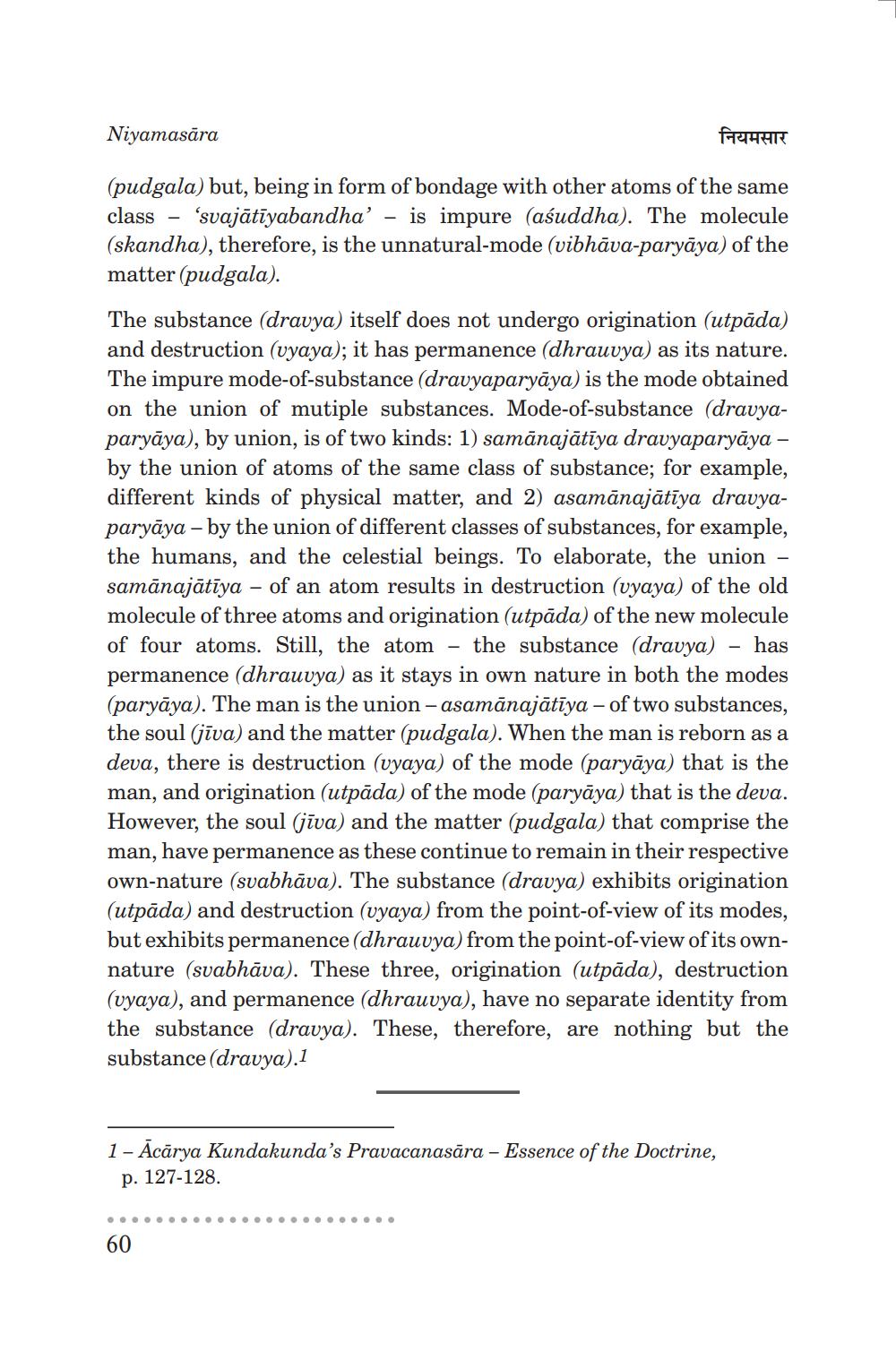________________
Niyamasāra
नियमसार
(pudgala) but, being in form of bondage with other atoms of the same class - 'svajātīyabandha' - is impure (aśuddha). The molecule (skandha), therefore, is the unnatural-mode (vibhāva-paryāya) of the matter (pudgala).
The substance (dravya) itself does not undergo origination (utpāda) and destruction (vyaya); it has permanence (dhrauvya) as its nature. The impure mode-of-substance (dravyaparyāya) is the mode obtained on the union of mutiple substances. Mode-of-substance (dravyaparyāya), by union, is of two kinds: 1) samānajātīya dravyaparyāya - by the union of atoms of the same class of substance; for example, different kinds of physical matter, and 2) asamānajātīya dravyaparyāya – by the union of different classes of substances, for example, the humans, and the celestial beings. To elaborate, the union – samānajātīya - of an atom results in destruction (vyaya) of the old molecule of three atoms and origination (utpāda) of the new molecule of four atoms. Still, the atom - the substance (dravya) - has permanence (dhrauvya) as it stays in own nature in both the modes (paryāya). The man is the union - asamānajātīya - of two substances, the soul (jīva) and the matter (pudgala). When the man is reborn as a deva, there is destruction (uyaya) of the mode (paryāya) that is the man, and origination (utpāda) of the mode (paryāya) that is the deva. However, the soul (jīva) and the matter (pudgala) that comprise the man, have permanence as these continue to remain in their respective own-nature (svabhāva). The substance (dravya) exhibits origination (utpāda) and destruction (vyaya) from the point-of-view of its modes, but exhibits permanence (dhrauvya) from the point-of-view of its ownnature (svabhāva). These three, origination (utpāda), destruction (uyaya), and permanence (dhrauvya), have no separate identity from the substance (dravya). These, therefore, are nothing but the substance (dravya).1
1 - Acārya Kundakunda's Pravacanasāra - Essence of the Doctrine, p. 127-128.
.
.
.
.
.
.
.
.
.
.
.
.
.
.
.
.
.
.
60




